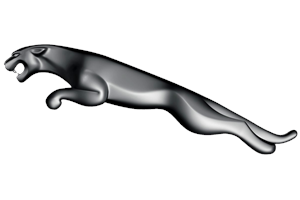


This edition of the Jaguar XJ 220 S 3.5 V6 Turbo is the 5 speed / Manual version and was first brought out in 1993. This was at around the same time as the introduction of the 1994 McLaren F1 6.1 V12 and the 1994 Lamborghini Diablo SE 5.7 V12.This particular Jaguar XJ has a 3498cc Turbo Petrol powerplant with 6 cylinders in a V formation.
The XJ shares its Petrol V6 engine configuration with the likes of the 2014 Radical RXC 3.5 V6 Twin Turbo and the 2015 Radical RXC Turbo 500 3.5 V6. If you're looking for other fast cars which share the XJ's Rear Wheel Drive, Coupe combination then how about the 1982 Fiat X1/9 1.5 8V or the 1965 Aston-Martin DB6 1965.
Weighing in at 1050 kgs (2314 lbs) this makes the Jaguar XJ 220 S 3.5 V6 Turbo in the same weight category as the 2016 Abarth 124 Spider 1.4 Turbo or the give or take 50kg.
In terms of power the 3498cc 24V V6 engine produces 680 bhp (507 kW) @ 7900 rpm similar to the 2023 Chevrolet Corvette Z06 5.5 V8 C8 (670 bhp) or the 2022 Aston-Martin DBX 707 4.0 V8 Twin Turbo (697 bhp).
The Turbo V6 throws out 526 lb-ft (713.1 Nm) @ 5000 rpm placing it with cars of similar torque performance figures such as the 2023 Lotus Eletre 603 bhp (524 lb-ft) or the 2023 Lamborghini Revuelto 6.5 V12 Petrol Hybrid (535 lb-ft).
If one combines the weight with power or torque performance for the Jaguar XJ you can get a better idea of it's real world performance.
![Pagani Utopia 6.0 V12 Twin Turbo - [2023] image Pagani Utopia 6.0 V12 Twin Turbo - [2023] image](/editionimages/2303.jpg)
The 2023 Pagani Utopia 6.0 V12 Twin Turbo (665.6 bhp per ton) has similar Bhp Per Ton stats as the Jaguar XJ.
The Jaguar XJ has a Power to weight ratio of 647.6 bhp per ton and 500.9 lb-ft per ton. Bhp Per Ton figures of the 1993 XJ competing with the 2023 Pagani Utopia 6.0 V12 Twin Turbo (665.6 bhp per ton) or the 2018 McLaren Senna 4.0 V8 Twin Turbo (658.5 bhp per ton).
If you agree with the late great Carroll Shelby then arguably an even better indicator of potential performance, Torque. Use weight as well and you end up with - Torque per ton, with the Jaguar XJ generating around 500.9 lb-ft per ton. If you're curious as to what other cars have as much torque to weight then look no further than the 2019 Ariel Atom 4 2.0 Turbo (521.0 lb-ft per ton) or the 2008 Ariel Atom V8 500 (516.3 lb-ft per ton).
With a 0-60mph time of 3.30 secs or a 0-100km/h (0-62mph) of 3.4 secs, this made the Jaguar XJ 220 S 3.5 V6 Turbo as fast as the 2023 Ferrari Roma Spider 3.9 V8 Turbo (3.30 secs) the 2023 BMW 3 Series M3 CS 3.0 Twin Turbo G80 (3.30 secs) the 2023 Porsche Boxster Spyder RS 4.0 982 (3.30 secs) the or the 2022 Ferrari Purosangue 6.5 V12 (3.30 secs). This Jaguar XJ 220 S 3.5 V6 Turbo is also faster than the 2023 Aston-Martin DBS 770 Ultimate Volante 5.2 V12 Twin Turbo (3.40 secs) the 2022 Aston-Martin Vantage V12 5.2 Twin Turbo (3.40 secs) the 2022 BMW 3 Series M3 Competition Touring 3.0 xDrive (3.40 secs) the and the 2022 Aston-Martin Vantage 5.2 V12 Twin Turbo Roadster (3.40 secs).
Quarter Mile time is a close race between the XJ and the 2018 Alfa-Romeo Giulia Quadrifoglio 2.9 V6 Bi Turbo
When talking about the performance of the Jaguar XJ on the drag strip it can reach a quarter mile in an estimated 9.51 secs @ 143.9 mph. Similar performance down the quarter mile can be found with the the 2018 Alfa-Romeo Giulia Quadrifoglio 2.9 V6 Bi Turbo (9.46 secs), the 2015 BMW 6 Series 4.4 V8 Competition Pack (9.47 secs), and the 2016 Mercedes C Class 63 AMG Saloon (9.48 secs).
Modern performance cars are often artificially restricted to 155mph. The 1993 version of the Jaguar XJ 220 S 3.5 V6 Turbo has a maximum speed of 228mph.
If maxing out your car on the AutoBahn is your thing and you're wondering what's faster than the 1993 Jaguar XJ 220 S 3.5 V6 Turbo then how about the 2013 W-Motors Lykan HyperSport 3.7L Twin Turbo (239 mph), the 2000 Saleen S7 7.0 V8 (240 mph), or the 2000 TVR Cerbera Speed 12 (240 mph).










Fiat Coupe 2.0 20V Turbo
Engine: Turbo Petrol | 1998cc 20v St5
Top Speed: 155 mph
0-60mph: 6.00 seconds

BMW Alpina Z4 Roadster S
Engine: Naturally Aspirated Petrol | 3346cc 24v V6
Top Speed: 265.5 kph
0-100kph: 5.2 seconds



















